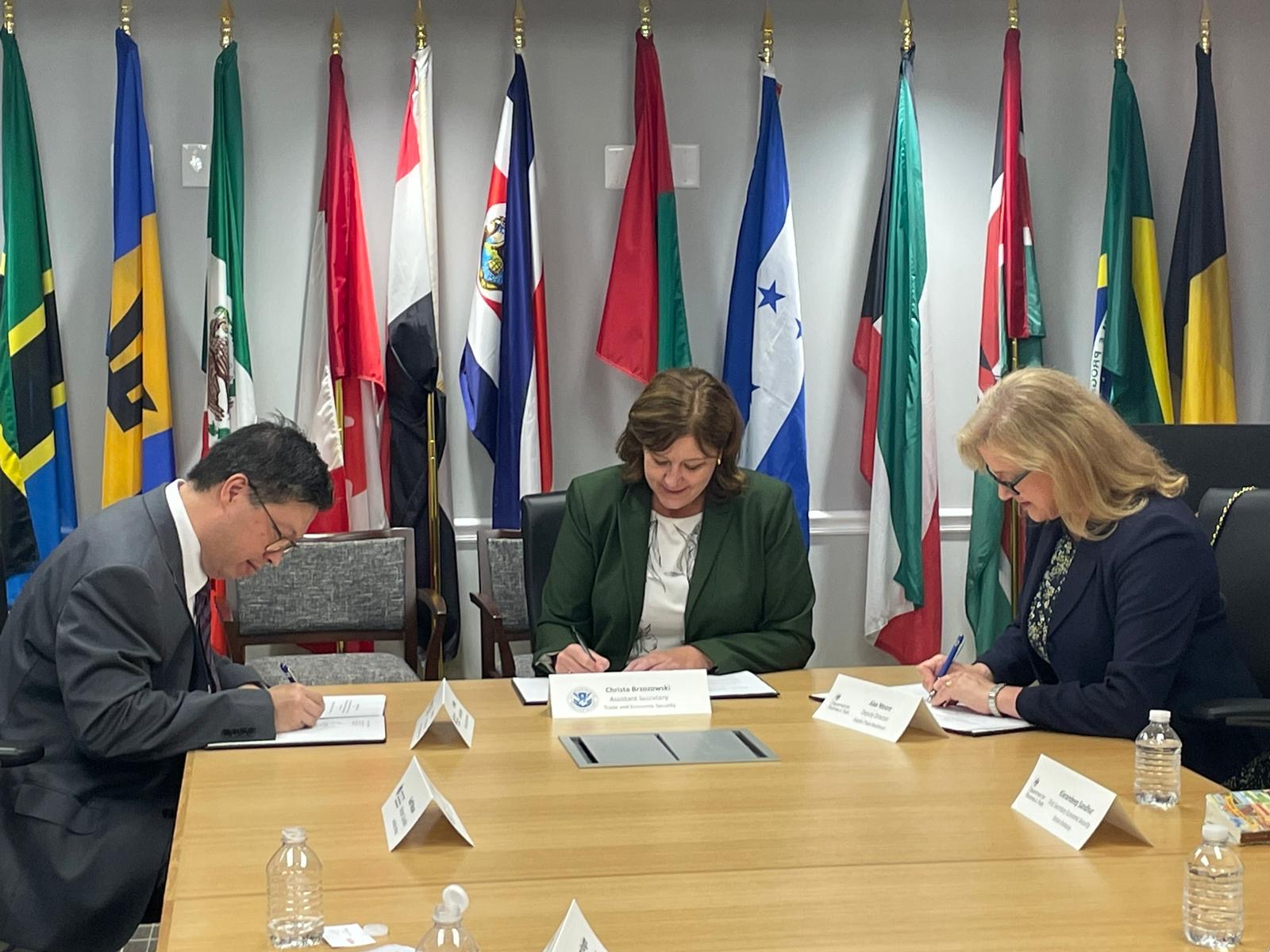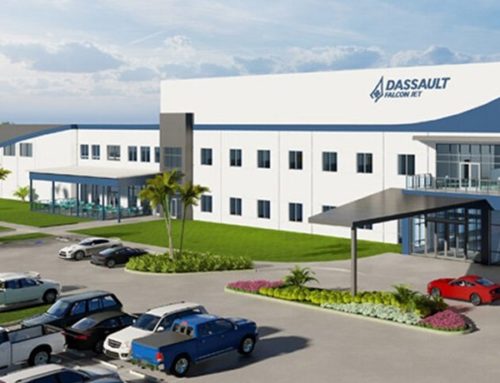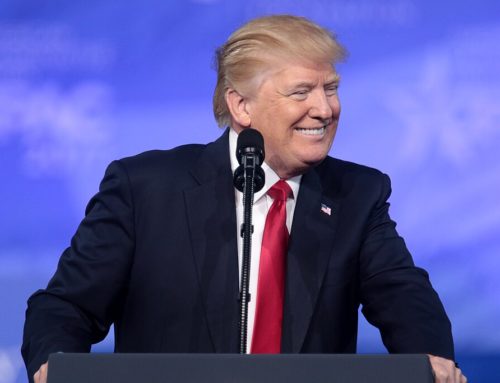1. UK, US and Australia sign supply chain resilience MoU
On September 9, 2024, the United Kingdom, the United States, and Australia signed a landmark Memorandum of Understanding (MoU) aimed at bolstering supply chain resilience. This agreement marks a significant step towards enhancing strategic cooperation and addressing risks to critical supply chains among these three nations.
Key Objectives of the Pact
The MoU establishes the Australia-United Kingdom-United States Supply Chain Resilience Cooperation Group. This group will focus on several key areas:
- Data Sharing and Joint Action: The group will facilitate the sharing of data and coordinated actions to build resilience in priority supply chains. This collaboration aims to enhance the ability of the three countries to identify and address risks, threats, and disruptions to their critical supply chains.
- Early Warning Pilot: One of the initial projects under this pact is an early warning pilot focused on the telecommunications supply chain. This pilot will help identify and monitor potential disruptions, enhancing the understanding of vulnerabilities and critical risks in this sector.
- Strategic Cooperation: By working together, the UK, US, and Australia aim to strengthen their mutual ability to respond to supply chain disruptions. This cooperation is vital for ensuring the stability and resilience needed to support their economies and national security.
Importance of the Agreement
The signing of this MoU signifies a deepening of the historic relationship between the UK, US, and Australia. It underscores their mutual commitment to tackling supply chain challenges, which have become increasingly prominent in the wake of global events such as the COVID-19 pandemic and geopolitical tensions.
Secretary of Homeland Security Alejandro N. Mayorkas highlighted the importance of this collaboration, stating, “The resilience of our critical supply chains is a homeland security and economic security imperative. Collaboration with international partners allows us to anticipate and mitigate disruptions before they occur”.
Future Prospects
The establishment of the Supply Chain Resilience Cooperation Group is just the beginning. As the group develops and implements its strategies, it is expected to expand its focus to other critical sectors beyond telecommunications. This proactive approach will help ensure that essential goods and services remain available, even in times of crisis.
In conclusion, the UK, US, and Australia’s commitment to strengthening supply chain resilience through this MoU is a significant step towards safeguarding their economies and national security. This trilateral collaboration sets a precedent for other nations to follow, highlighting the importance of international cooperation in addressing global supply chain challenges.
2. Kongsberg to build new missile site in Virginia
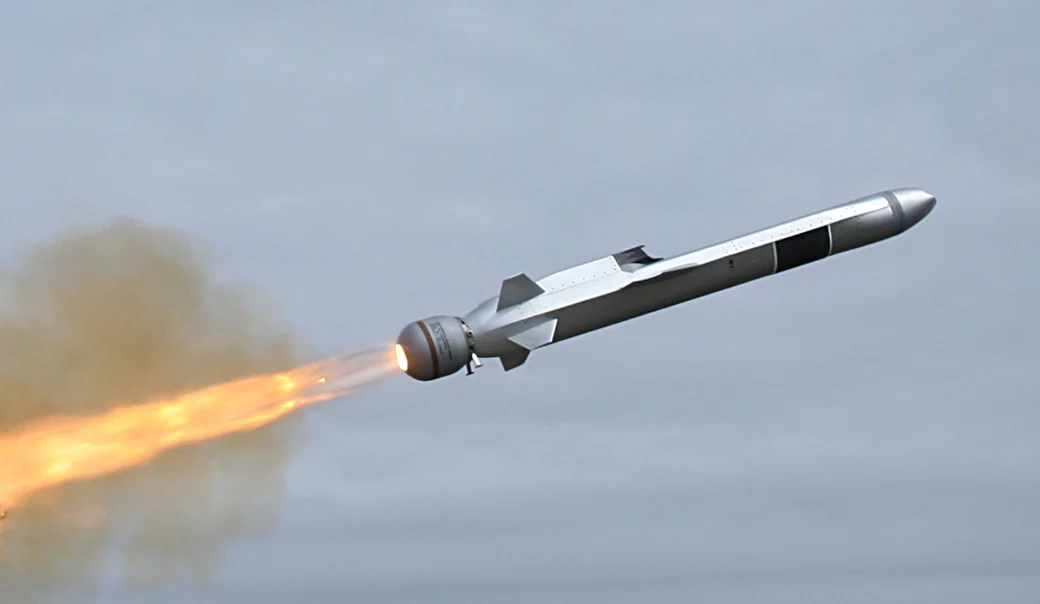
Credit Kongsberg
In a significant move to enhance the United States’ defense capabilities, Kongsberg Defence and Aerospace, a leading Norwegian defense contractor, has announced the establishment of a new missile production facility in James City County, Virginia. This strategic investment aims to meet the growing global demand for advanced missile systems, particularly from the US Navy, Marine Corps, and Air Force.
Strategic Location and Investment
The new facility, strategically located near key US Navy installations, will focus on the production, assembly, and maintenance of Kongsberg’s renowned Naval Strike Missiles (NSM) and Joint Strike Missiles (JSM). These missiles are critical for modern naval and air combat operations, offering superior operational performance and high survivability against enemy defense systems.
Kongsberg is investing approximately $101 million into this state-of-the-art facility, which includes $71 million for the construction of the 14,000 square meter plant and an additional $30 million for engineering and software costs. This investment is expected to create around 180 new jobs, significantly boosting the local economy and strengthening the US defense industrial base.
Meeting Global Demand
The decision to establish this facility in the US was heavily influenced by the potential for a multiyear procurement contract from the Department of Defense. This contract would provide the predictability needed for Kongsberg to invest in the US market and expand its supply chain locally. The new site will not only increase production capacity but also ensure the sustainment and technological refresh of these critical missile systems.
Expanding Global Footprint
This new facility in Virginia is part of Kongsberg’s broader strategy to expand its global footprint. Recently, the company announced similar investments in missile production facilities in Australia, further underscoring its commitment to meeting the surging global demand for advanced defense technologies.
Conclusion
Kongsberg’s new missile production site in Virginia represents a significant boost to the US defense capabilities. By investing in local production and creating new jobs, Kongsberg is not only supporting American interests but also strengthening the collective defense capabilities of its allies. This move highlights the importance of international collaboration in maintaining global security and stability.
3. OptiTrack doubles US manufacturing operations
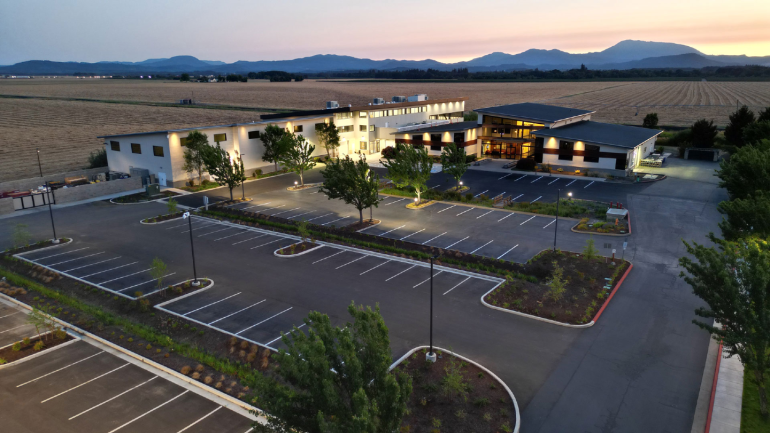
Credit OptiTrack
OptiTrack, a global leader in 3D tracking technology, has significantly expanded its manufacturing operations in Corvallis, Oregon. This expansion nearly doubles the company’s production capacity, enhancing its ability to meet the growing demand for high-quality 3D tracking solutions.
The new facility, spanning 25,000 square feet, introduces a state-of-the-art surface-mount technology (SMT) line, increased warehouse storage, and dedicated spaces for prototyping, additive manufacturing, and assembly. This comprehensive setup allows OptiTrack to streamline its manufacturing process, from research and conception to final assembly, ensuring quicker and more efficient production cycles.
Stephanie Hines, Executive Vice President of OptiTrack, emphasised the benefits of the new facility: “Our new building delivers everything we need in one place, giving us more control over the entire manufacturing process. This enables us to better and more quickly meet customer needs worldwide”.
Marc Alley, Vice President of Operations, highlighted the potential for innovation: “In addition to building more products faster, we’ll be able to introduce new innovations and better support custom capabilities. This expansion strengthens our commitment to delivering unrivaled precision, durability, and high-performance optical tracking”.
The expansion is not just about increased production capacity. It also aims to bolster OptiTrack’s on-site research and development efforts, paving the way for new product developments scheduled for late 2024 and 2025. The facility will create new jobs in the region, contributing to the local economy and reinforcing OptiTrack’s nearly 30-year leadership in tracking technology.
OptiTrack’s enhanced manufacturing capabilities come at a crucial time as the demand for advanced motion capture (mocap) solutions continues to rise across various industries, including entertainment, biomechanics, research, and robotics. The company’s latest products, such as the PrimeX 120 mocap cameras and Motive 3.1 motion tracking software, exemplify its commitment to innovation and quality.
With this expansion, OptiTrack is well-positioned to maintain its leadership in the 3D tracking technology market and continue providing cutting-edge solutions to its global customer base.
4. UK signs pivotal trade and investment deal with Thailand
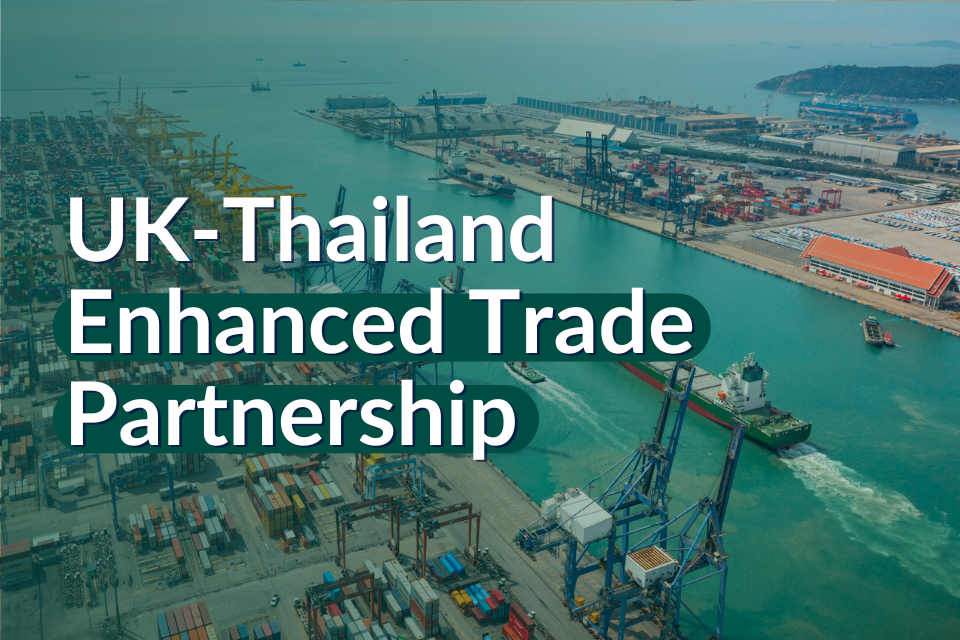
In a significant move to bolster economic ties, the United Kingdom has signed an Enhanced Trade Partnership (ETP) with Thailand. This landmark agreement, finalised on September 18, 2024, marks the first major trade deal under the new Labour government led by Prime Minister Keir Starmer.
Key Highlights of the Deal
The ETP aims to eliminate specific trade barriers and foster collaboration in various sectors, including technology, customs, and standards. Notably, the agreement does not encompass broad tariff reductions but focuses on targeted improvements to facilitate smoother trade operations.
Economic Impact
Trade between the UK and Thailand, Southeast Asia’s second-largest economy, is already substantial, amounting to £5.9 billion annually. The new partnership is expected to further enhance this relationship by creating opportunities for UK businesses in priority sectors such as automotive, tourism, digital trade, financial services, and education.
Benefits for UK Businesses
One of the immediate benefits of the ETP is the acceptance of UK vehicle emissions testing standards by Thailand, eliminating the need for additional testing under Thai regulations. This change is projected to save UK car manufacturers millions of pounds. A similar agreement for motorbikes is currently under negotiation.
Additionally, the deal simplifies the process for UK food and drink manufacturers to export to Thailand. Companies can now submit conformity documentation via email, bypassing the need for physical stamps from the British Embassy. This adjustment is estimated to be worth up to £70 million for UK businesses over five years.
Government and Industry Reactions
Trade Minister Douglas Alexander, who signed the agreement alongside Thai Commerce Minister Pichai Naripthaphan in Bangkok, emphasised the importance of capitalising on Thailand’s rapid economic growth. “This partnership will bring our two countries closer together and help British businesses sell to Thailand, supporting jobs and growth around the country,” Alexander stated.
Debra Crew, CEO of Diageo, expressed optimism about the partnership, highlighting its potential to resolve costly trade barriers. “We hope this will be the first step towards a more streamlined and efficient trade process,” she said.
Future Prospects
The ETP also sets the stage for a potential future UK-Thailand Free Trade Agreement, with both sides committed to identifying further opportunities for collaboration. As part of his visit to Asia, Alexander will participate in a summit of ASEAN economic ministers in Laos, where he is expected to discuss the UK’s broader trade strategies with representatives from the 10-country bloc.
5. Automakers Shift Gears on EV Strategies
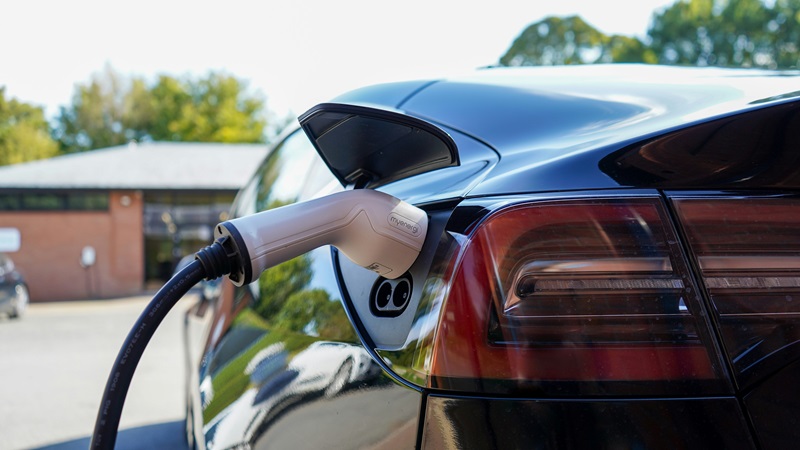
In recent years, the automotive industry has been on a fast track towards electrification, with many major car manufacturers announcing ambitious plans to phase out internal combustion engines (ICE) in favor of electric vehicles (EVs). However, recent developments indicate a significant shift in these strategies as automakers recalibrate their approach to EV production and sales.
Market Challenges and Strategic Adjustments
Several factors have contributed to this strategic pivot. Higher production costs for battery electric vehicles (BEVs) compared to traditional ICE cars, coupled with rising interest rates, have made financing new EV purchases more expensive for consumers. Additionally, concerns about EV charging infrastructure and driving range have slowed the adoption rate among the broader market.
As a result, many automakers are now focusing on more profitable legacy petrol-powered cars and hybrid models. For instance, Ford has reduced its annual capital expenditure on purely EVs from 40% to 30% and canceled plans to build all-electric three-row SUVs, opting instead to produce hybrid SUVs. Similarly, General Motors (GM) has shifted its strategy to include plug-in hybrid models, delaying the production of some EV models and adjusting its production targets.
Competitive Pressures and Technological Hurdles
The competition from cheaper Chinese EV manufacturers such as BYD, Nio, and XPeng has also pressured Western automakers to rethink their strategies. These Chinese brands have recorded strong growth in their EV sales, making it challenging for Western companies to compete on price and technology.
Moreover, the transition to EVs requires significant adjustments in manufacturing processes. EVs are more reliant on software and require competitively priced battery technology, which has proven difficult for many traditional automakers to achieve quickly.
Future Outlook
Despite these challenges, the long-term vision for an electric future remains. Automakers are not abandoning their EV goals but are instead adopting a more balanced approach. For example, Volvo has revised its target to sell only fully electric cars by 2030, now aiming for between 90% and 100% of global sales. This adjustment reflects a more pragmatic approach to electrification, balancing between EVs, hybrids, and traditional combustion engines.
In conclusion, while the road to full electrification may be longer and more complex than initially anticipated, the automotive industry continues to innovate and adapt. By recalibrating their strategies, automakers aim to navigate the current market challenges and pave the way for a sustainable future.
Featured image Credit UK Business and Trade – North America

